Airport Extreme (5th Gen) and Time Capsule (4th Gen) Review - Faster WiFi
by Brian Klug on August 5, 2011 10:22 PM EST- Posted in
- Mac
- Airport Extreme
- Time Capsule
- WiFi
Airport Utility and Network
The only remaining thing to go over is the Airport Utility and general network functionality. I’m not going to go into very much detail at all about the network side of things (routing performance, etc.) since honestly nothing has changed here—the board and SoC are the exact same.
To start, all configuration is done through Airport Utility on OS X and Windows. There’s no web-based portal like just about every other attached network device. On all of Apple’s WiFi products, Airport Utility is the exclusive point of configuration. It pops up a list of devices, including unconfigured ones without the need to connect over ethernet. Admittedly that’s a nice touch that makes configuration super easy.
There’s either the choice to have a wizard set everything up, or you can do it manually. The first page is summary, which lists some basic information, status, and high level information. Status mirrors the front panel LED which either glows green or amber depending on whether things are working fine.
For example, when the Time Capsule starts overheating the LED blinks amber and pops up an alert. The utility can also monitor for when problems happen.
The rest of configuration is honestly pretty straightforward. Each of the radios (2.4 and 5GHz) can be set to its own SSID, there are a wide selection of radio modes and the ability to set channels manually. As an aside, if you’re going to set the 5GHz channel manually, select one over 149 to get maximum power and avoid dynamic frequency selection chanels in the US.
There’s honestly everything you’d want from a consumer level router or wireless AP, and a couple of extras like RADIUS server support and guest network creation.
If you run the devices as a router, you can also port forward, configure the DHCP server (including static addresses assigned to specific MACs), and all the usual fixings. That said, some of the options are a bit barebones compared to more enthusiast open source packages, but it gets the job done.
In addition to sharing disks, the Airports can also share printers attached using USB. I’ve experimented around and even a USB hub plugged in with devices attached to it works, so you’re not limited to just a single port.
One of the features Airport Utility has that a lot of other consumer devices don’t is a nice way of viewing the status of attached wireless clients, including a little graph that continually tracks. The utility will show each client MAC address, signal, noise level, rate, and what network mode they’re using. It’s an incredibly useful diagnostic tool that’s honestly a step beyond what Tomato or even DD-WRT report for clients.
The Windows version of Airport Utility looks a bit like a program from the Windows XP days, which is about par but not unforgivable. Everything inside works the same way, except this version forgoes the client signal graph and instead just presents a table with data. You can still do everything else, however.
Update: Our own Saumitra Bhagwat pointed out to me that on iOS 5 Beta, you can actually use an Airport Utility (lite) built into the WiFi settings page to configure a new Airport Extreme or Time Capsule. You have to be in the initial setup state (reset completely to defaults) to see it, but when in range, a "setup an airport base station" window appears, allowing this lite level of configuration. Depending on your existing setup, it'll offer some suggestions as well (for example, as I'm attached to a current Extreme, it offers to extend by default).
Another small but useful thing is that both devices support SNMP, so you can do stuff like track traffic on all the internal interfaces on the device using software like MRTG or Cacti (both of which I’m a huge fan of). There’s even a MIB for how many wireless clients are joined. If you’re not into using SNMP yourself, there’s a simple utility out there called Airport Flow that gives you a per-interface graph and the total number of clients attached.
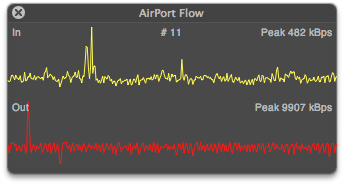
You need to specify the device IP address and what interface to monitor, so you might have to snmpwalk the airport (snmpwalk -c public [ip addy]) and look for the line with each interface name:
IF-MIB::ifDescr.1 = STRING: mgi0IF-MIB::ifDescr.2 = STRING: mgi1IF-MIB::ifDescr.3 = STRING: bwl0IF-MIB::ifDescr.4 = STRING: bwl1IF-MIB::ifDescr.5 = STRING: lo0IF-MIB::ifDescr.6 = STRING: wlan0IF-MIB::ifDescr.7 = STRING: wlan1IF-MIB::ifDescr.8 = STRING: bridge0
But there’s nothing complicated about that.
Honestly, for routing and firewall, the Time Capsule and Airport Extreme get the job done but without much flair or ability to tweak low level things like I’d like to see. I generally use either a pfSense embedded x86 box, WRT54G-TM running Tomato, or a WRT-600 running DD-WRT for NAT routing, firewall, and DHCP myself, just because those options offer a ton of fine grained control over the network side, and then an Airport Extreme for WLAN. That said, the Time Capsule or Airport Extreme can do all of that in one box.


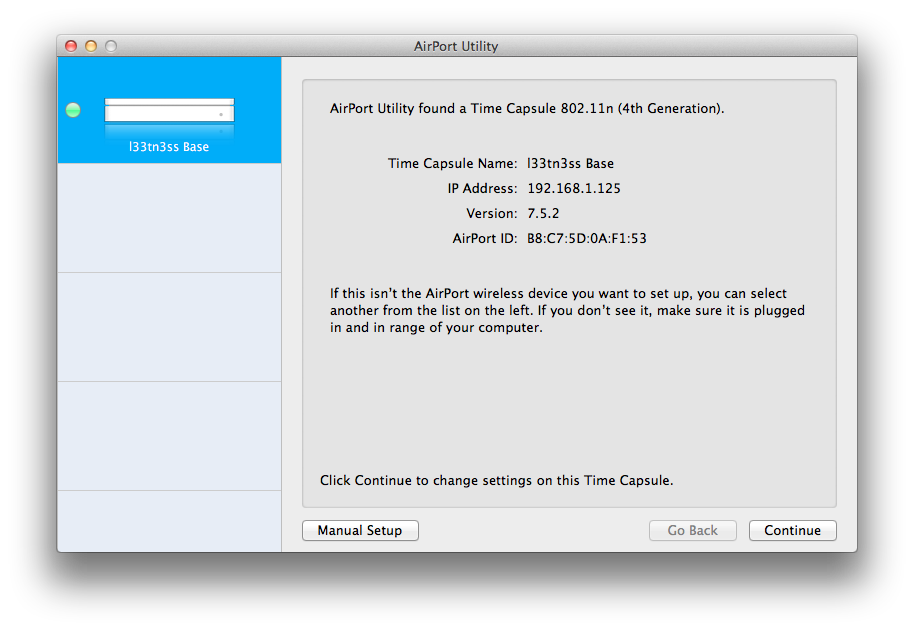
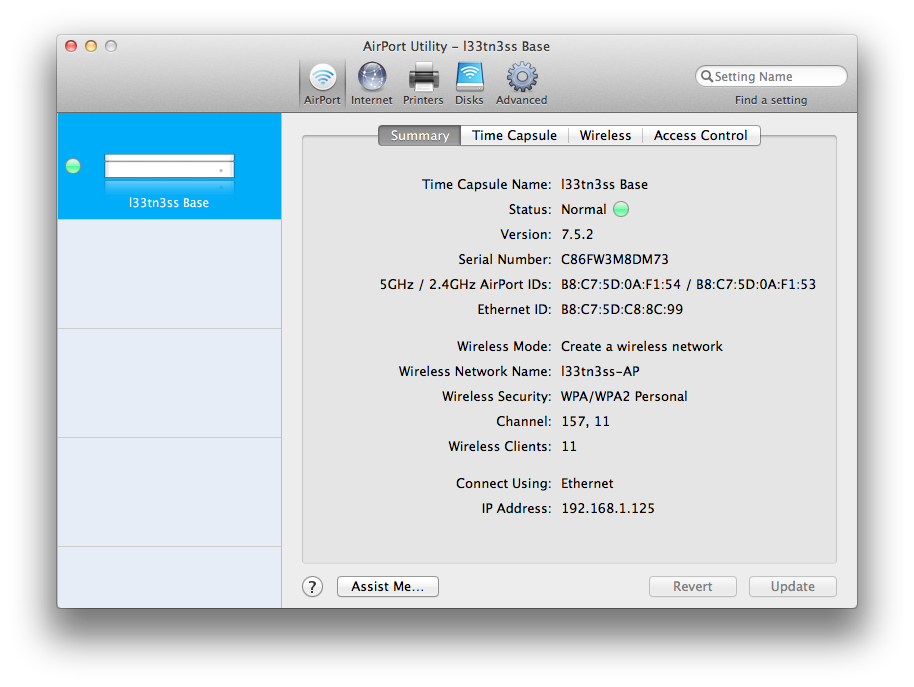
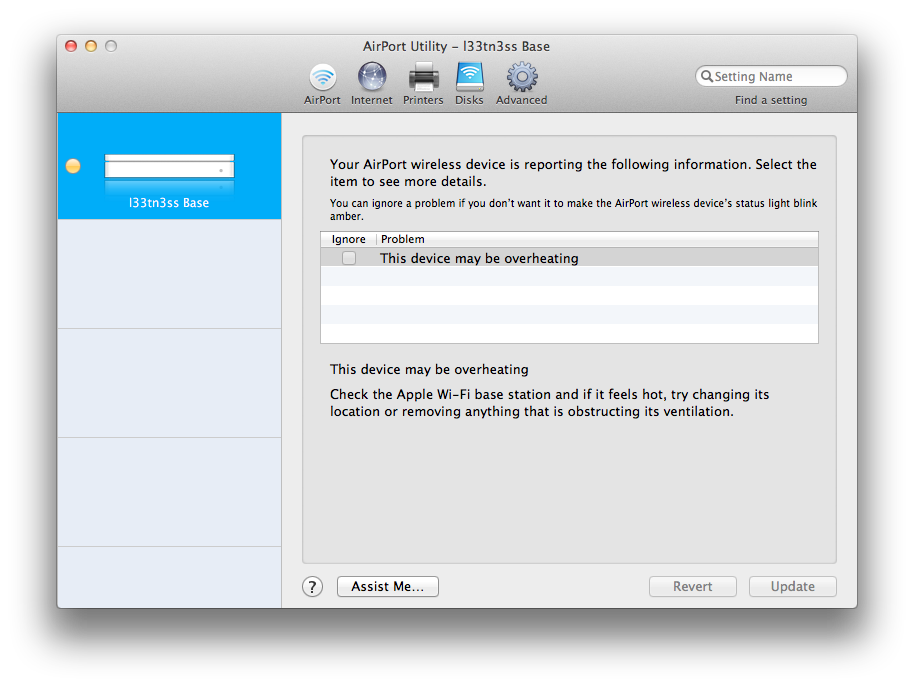
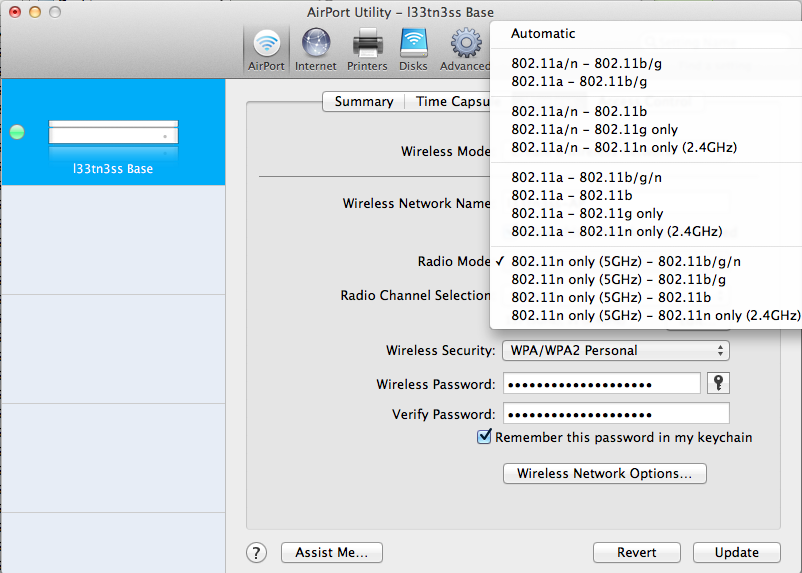
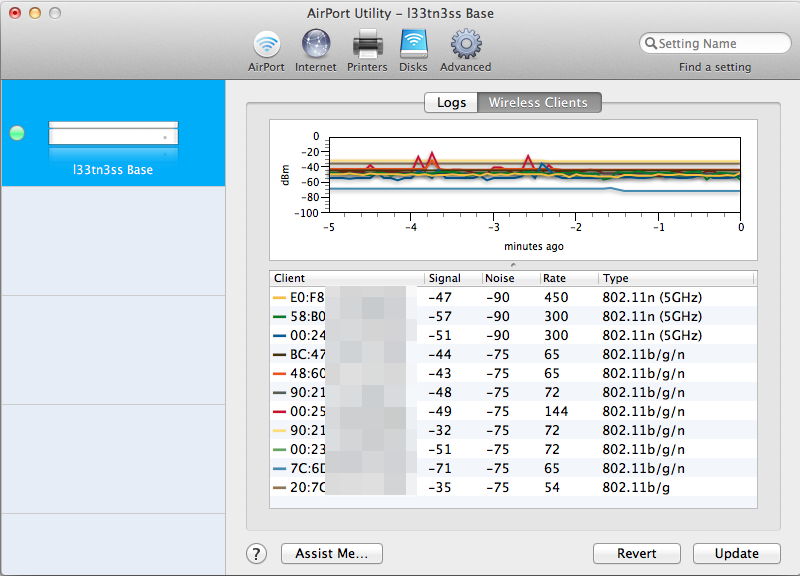


























90 Comments
View All Comments
gman_wa - Tuesday, August 9, 2011 - link
I bought a 5th Extreme when they came out a couple weeks ago and returned it based on the Meraki Wi-Fi Stumber java-based browser app.Maybe its my house, but with the 2nd gen and the 5th gen side by side, the 2nd gen signal strength was consistently ~5-10db stronger than the 5th ten. My 2nd gen runs the 2.4Ghz b/g/n network in the house and I wanted to replace this with something stronger and add the guest networking.
I didn't actually try to compare throughput via wired or wireless.
Maybe I got a dud? Or would the single radio on the 2nd gen model outperform the dual radio models?
Thoughts?
applesandsynths - Wednesday, August 10, 2011 - link
Hey guys,I just had a quick question for anyone who may have a new 5th generation Airport Extreme. Can you tell me if the power rating numbers on the AC adapter are:
Input AC 100-200v 50-60Hz 0.5A Output: 12V 1.8A Model: A1202?
I know that these are the numbers from an older adapter but was just wondering if the new adapters are any different?
Thanks!
jackwong - Sunday, August 14, 2011 - link
I have the 4th and 5th.They are both 1A instead of 0.5A and the model is 20BB A.
Lebannen - Wednesday, August 10, 2011 - link
One thing I'm very interested in with regards to the Airport Extreme is noise. When connected to Airport Extremes (4th gen) over 5GHz, I can hear a reasonably loud noise when data transfer is occurring - elsewhere on the net I've heard it described as screeching and sizzling. I'm aware that it's all solid state so can only speculate that it's switching noise.It only occurs with 5GHz transfers, not with 2.4GHz, which *might* make it something to with the antenna configuration? If so, it may not have changed, but I'd be glad to hear either way - thanks :)
tichi - Thursday, August 11, 2011 - link
Just wondering if two other features (not mentioned in the article) are supported in the new version of Airport Extreme :1) Can you clone mac address for those of us not using DSL?
2) Can you still throttle the power output of the antenna?
Thanks
layman2 - Sunday, August 14, 2011 - link
It would be great if it had wireless internet i.e it gets internet over 3G or cDma networks and share it through wi-fi with other devicesDeath666Angel - Monday, August 15, 2011 - link
Hey guys!Really good article.
I was wondering if you will be testing other 450mbps routers, too? You mentioned The Linksys E4200. What about the TRENDnet TEW-692GR which costs 20-30€ less than the Apple and about 5€ less than the Linksys, but seems to support both 2.4GHz and 5GHz with 450mbps simultaneously.
Also, I have only found one WiFi adapter for 450mpbs for desktop PCs and that is a USB one called TRENDnet TEW-684UB. I have not found any PCI/PCIE cards that support 450mbps for the desktop. Is there any way to use mini-PCIE cards like the Intel 6300 in a desktop PC? Would it make sense to use a 450mbps access point as my WiFi card via ethernet?
I would like to upgrade my WiFi system in order to stream HD content from my future file server to my media PC in my living room. My wife would kill me if I laid any cables for ethernet, so WiFi is the only way in this situation. I somehow feel like the higher WiFi offers are still very experimental. It's difficult to find decent reviews who test the products not just write down the specs.
Matt Campbell - Tuesday, August 16, 2011 - link
Very nice, especially the FCC listings and teardown. The one thing I would have liked to see is how the internal drive speed compared to a NAS system like the My Book Live, Go Flex or other home NAS system, which would bypass the slow USB connection. I bought a 2 TB unit yesterday and am still reserving judgment vs. a router/NAS setup.Amia - Wednesday, August 17, 2011 - link
I saw this review and bought TC 2T but file transfer speed from TC to PC via GigE is no where near 80mbps,actually less than 40. Wonder how this test has been done (Amia - Wednesday, August 17, 2011 - link
Under 5g my Mac air is getting 270mbps but my another laptop which used to get 300mbps using my previous router can only have 150mbps. Maybe just like Mac air apple doesn't want you to use dual band (40mhz) under 2.4ghz